Australia has a coastline that stretches almost 50,000 kilometres and has almost 11,000 beaches. By travelling with a motorhome or campervan you probably at one point end up on beach somewhere. Here are some tips to be save on you journey.
Check here which beaches are patrolled in Australia: https://beachsafe.org.au/
If you would visit a new beach every day in Australia it would take you over 27 years to see them all. The most popular beach in Australia is Bondi Beach (of which the TV series Bondi Rescue also played a big role), but there are so many other beaches worth visiting.
Whatever beach you will be going to, beach safety is very important to be able to enjoy your time in Australia till the fullest.
Remember…FLAGS
F… Find the red and yellow flags and swim between them
L…Look at, understand and obey, the safety signs
A…Ask a lifeguard or surf lifesaver for advice before you enter the water
G…Get a friend to swim with you
S…Stick your hand up, stay calm, float, and wait for assistance
FLAGS AT THE BEACHES
SIGNS AT THE BEACHES
You might also find the following signs at the beaches.
The signs and flags are there to inform you on something and not just to fill up some space, read and follow instructions to enjoy the best day at the beach.
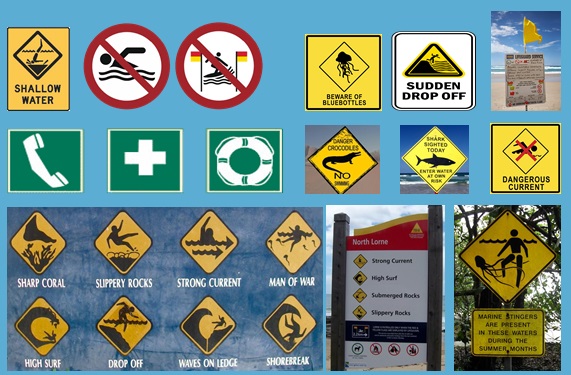
SURF LIFESAVERS AND LIFEGUARDS
You will see different people on the beaches who are there to make sure you are save. Lifeguards and surf lifesavers. What is the difference? Surf lifesavers are volunteers (trained) who patrol the beaches on public holidays and weekends and during the peak school holiday and summer season (September – May). Lifeguards are paid professionals who in general patrol the beaches (and lagoons and resorts) seven days per week (this depends on the location)

RIP CURRENTS
Rips are the number one hazard on Australian beaches. How to avoid them? Swim between the red and yellow flags. You often hear people talk about the rips in Australia, but what is a rip current now exactly?
Rips can change shape and location very quickly and are often difficult to see. Try to spot them by looking at:
- Deeper/dark-coloured water
- Fewer breaking waves
- A rippled surface surrounded by smooth water
- Anything floating out to sea or foamy, discoloured, sandy, water flowing out beyond the waves
A rip is the path the water being pushed onto the shore by waves takes to run back into the ocean. Why it is dangerous? People try to swim against the current back to shore and this will make you exhausted. Also inexperienced swimmers can get pushed out to the deep waters, where they cannot stand up.
How to survive when you get stuck in a rip current?
- First: Relax (stay calm and float to conserve your energy. The current will not pull you under and your body can float).
- Second: Raise (raise your arm and attract attention from lifeguards/lifesavers and others)
- Third: Rescue (the lifeguards/lifesavers will be on their way to help you)
If you do feel confident, swim parallel to the shoreline towards the white water, here it will be shallower and the waves will help you get back to shore.
NEVER swim against the rip straight back to shore.
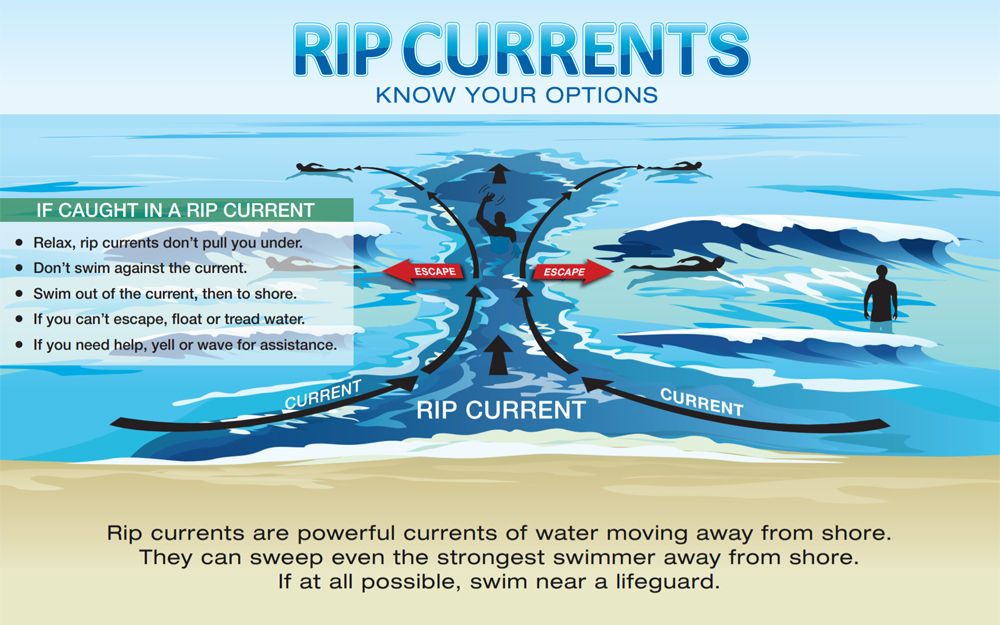
SUN SAFETY
In Australia the sun has very dangerous UV rays and even in the shade (and when it is cloudy) you can easily get sunburnt. Where in your own country you might be baking in the sun all day in summer, we definitely do not recommend to do the same thing here. It is very easy to get skin cancer if you do that often. There are a few handy steps to keep in mind when going out into the sun.
SLIP – SLOP – SLAP – SEEK – SLIDE
SLIP on protective clothing (cover as much skin as possible (think of rash shirts when out in the water))
SLOP on a high SPF sunscreen (preferably 30 or higher). Apply this at least 20 minutes before you go outside and reapply every few hours.
SLAP on a hat (something that provides good protection for the face, nose, neck and ears).
SEEK shade. Make use of trees or umbrellas or anything that keeps you out of the direct sun.
SLIDE on your sunnies.
MARINE CREATURES
Everyone knows Australia is a country with many, many, many dangerous animals. However, the change you will see many of them is very slim. Luckily Australia also has lots of water to share with all the amazing, breathtaking dolphins, whales and turtles. A few less fun animals should be put on your ‘stay-away-from’ list.
THE BLUE RINGED OCTOPUS
These animals are commonly found in shallow rock pools of inter-tidal zones, hiding amongst the rocks all around Australia. How to avoid? Stay clear and do not disturb these environments.
What if? The bite is usually painless. Numbness of the lips and tongue may occur with weakness and breathing difficulties.
- Contact 000 (emergency) immediately
- Proceed with CPR if necessary
- Apply compression or immobilisation bandaging to the area
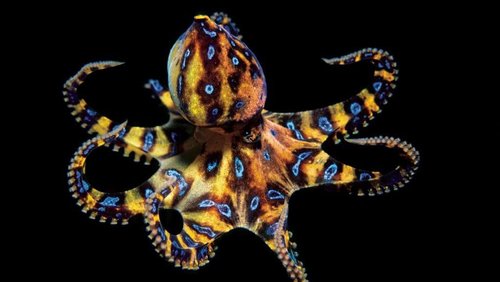
CROCODILES
In Northern Australia there are many crocodiles. These animals can be extremely dangerous. And when you see a sign ‘ do not swim, crocodiles’, play it very safe if you want to stay alive and be smart and do not enter. Also in Northern Queensland there will be parts where no signs will be placed, always be very cautious, as in rivers, lakes and the ocean is where crocodiles live. Only swim in designated safe areas.

SHARKS
Most sharks are harmless to humans, but just to minimise your chances of encountering a shark.
- Do not swim between dawn and dusk
- Do not swim at river mouths or in murk/discoloured water
- Do not swim in or around schools of baitfish

JELLYFISH
These two are non-tropical stingers and can be found all around Australia.
The best known is the bluebottle. When your skin touches the tentacles (which is covered in stinging cells), it will inject small amounts of a toxin that can cause irritation and can be quite painful.
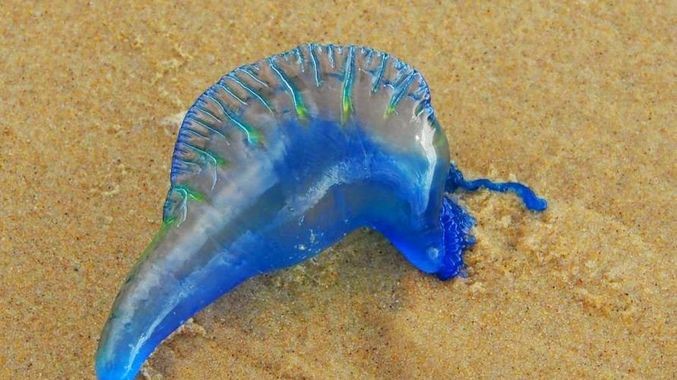
Another one is the hair jelly. This one also has tentacles that can cause a painful sting.
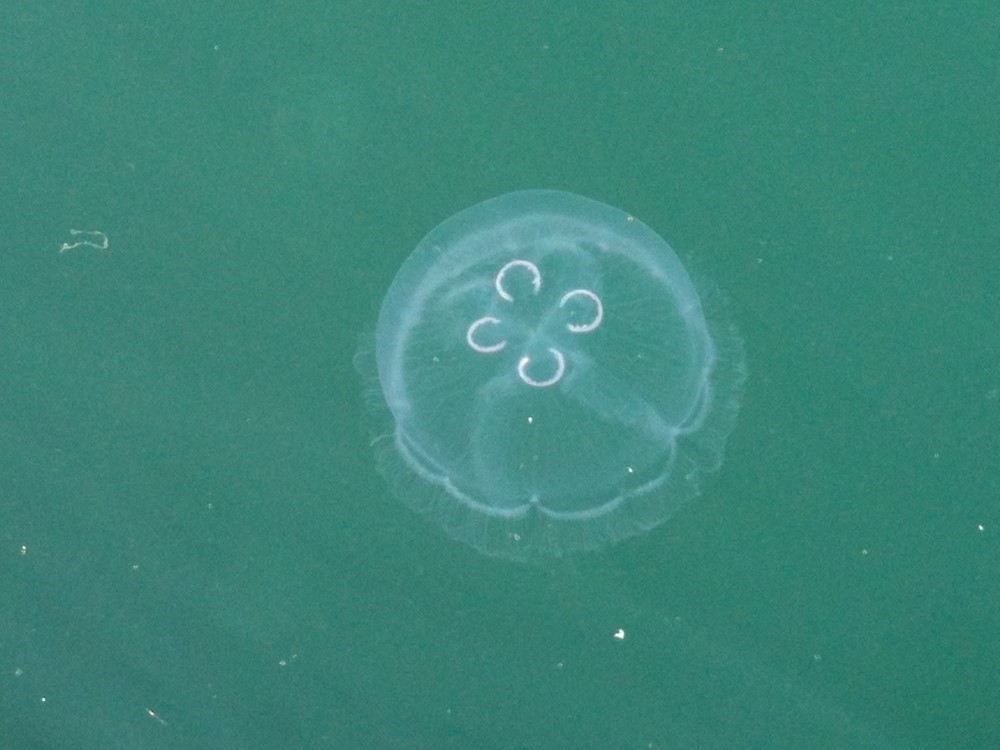
What if stung by a bluebottle? Wash off any remaining tentacles with seawater (or pick with your fingers) (mostly they cannot sting through the tough skin on your fingers), immerse the sting in hot water (no hotter than can be easily tolerated) and if local pain is not relieved, the application of cold packs or wrapped ice is also effective.
What if stung by other jellyfish? Wash off any remaining tentacles with seawater (or pick with your fingers), apply cold pack or wrapped ice for at least 10 minutes or until the pain is relieved and refer to medical aid for further treatment if condition deteriorates
You also have tropical stingers which you will mainly find in the tropical waters of Australia (Queensland and Northern Territory) and North West Australia and are considered the most dangerous marine stingers on earth.
These stingers have potent toxic stings that can cause serious illness and death in some cases.
How to protect yourself from these stingers?
- Swim at patrolled beaches and inside the stinger nets (where provided)
- Look for and obey any safety signs
- Don’t enter the water when beaches are closed
- Wear a full body lycra suit (stinger season is generally November to March)
- Ask a lifeguard for help and advice if you need it
 he best know is the box jellyfish. This one has up to 15 tentacles that can extend up to 3 metres in length. Its sting causes severe burning skin pain, often with tentacles remaining in the stung area. Severe stings can cause respiratory distress and cardiac arrest.
he best know is the box jellyfish. This one has up to 15 tentacles that can extend up to 3 metres in length. Its sting causes severe burning skin pain, often with tentacles remaining in the stung area. Severe stings can cause respiratory distress and cardiac arrest.
The next one is the Irukandji. They cause an initial minor sting, followed 5-40 minutes later by severe generalised muscular pain, headache, vomiting and sweating. It can also increase blood pressure which may become life threatening.
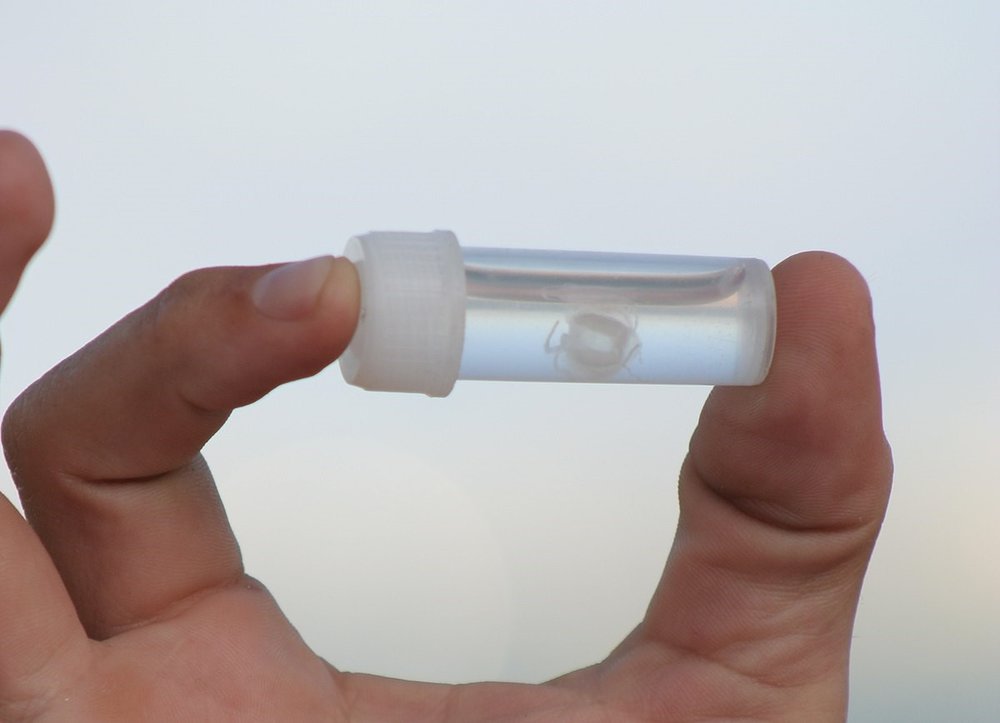
What if?
- Contact 000 (emergency) immediately
- Provide emergency care including CPR if needed
- Treat the sting by pouring vinegar onto the affected area
- Seek medical aid and transport to the hospital
We hope you have save trip!






